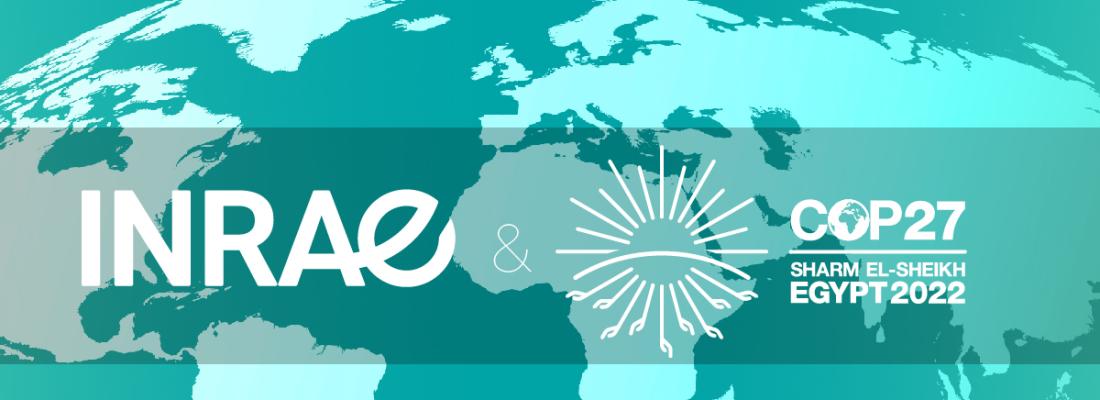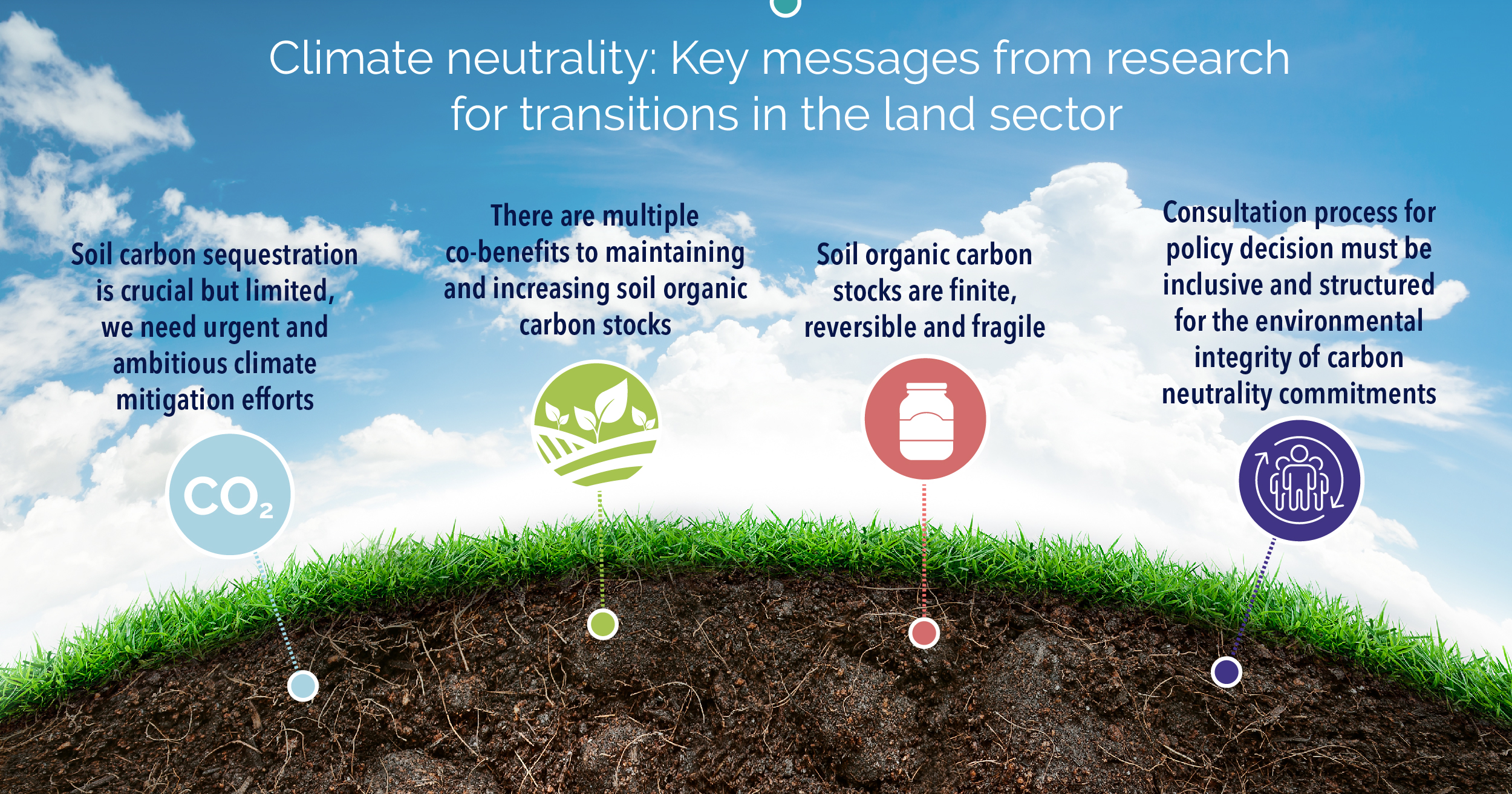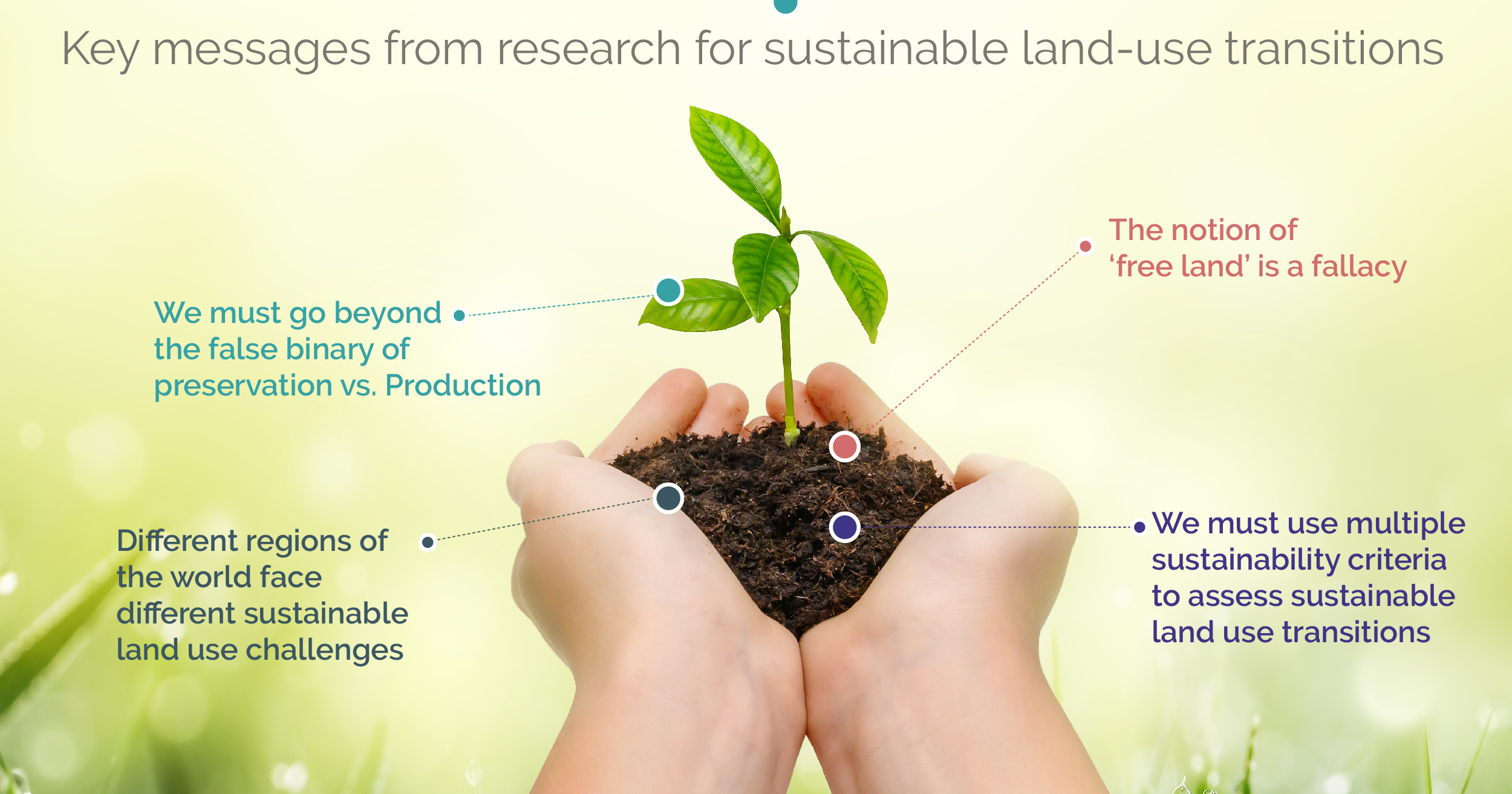Climate change and risks Reading time 3 min
After COP27: where are we on climate change and land?
Published on 25 November 2022

The global climate crisis is exacerbating pressures on land, and with it, multiple overlapping challenges are at stake: global food security, biodiversity and ecosystem services, natural resources essential to life on earth, such as water, as shown by the Intergovernmental Panel on Climate Change (IPCC) reports. Agriculture and soil health are key vectors for reaching the Paris Agreement emission targets and tackle the multiple global challenges.
Koronovia Joint work on Agriculture decision to implement Climate Action
After a 4-year cycle of workshops which led to several contributions coordinated by INRAE, the outcomes of the Koronivia Joint Work on Agriculture were presented at COP27. Coming to a decision, the follow-up Joint work on implementation of climate action on agriculture and food security is adopted for the next 4 years. The decision recognises the vulnerability of global food systems to the adverse effects of climate change, other global challenges and the limited progress towards achieving the Sustainable Development Goals. It further recognises that issues relating to soil and integrated water management, are county-specific and it promotes a holistic and inclusive approach in contributing to food security, adaptation and its co-benefits as well as enhancing carbon sink.
The implementation phase of Koronivia includes:
- Delivery of annual synthesis reports
- In-session workshops
- Establishment of the Sharm El-Sheikh online portal for sharing information on implementation
A call for contributions: Parties and observers are invited to submit views by March 27, 2023, on the elements of Koronivia, on topics for the workshops and on the operationalization of the portal for consideration by the subsidiary bodies at their 58th sessions (June 2023).
The land sector: a game changer for a net zero CO2, adaptation, biodiversity & food security
A side-event organized by INRAE, Cirad and IRD, examined the means and ways to address synergies and trade-offs to make the land sector a transformative key vector for climate biodiversity and food security in the perspectives of Net Zero CO2 emissions.
What is science telling us on the land sector?
Land is a critical resource for food, water and health. However, the IPCC special report on climate change and land showed that land resources are threatened by increasing pressures due to climate change. Taking into account the overlapping challenges – desertification, land degradation, food security, biodiversity, ground water stress and water quality – is essential to implement diverse mitigation actions, that come with co-benefits and trade-offs. While the increase of soil organic carbon induces co-benefits for multiple overlapping challenges, other solutions such as carbon dioxide removal by bioenergy may come with pressures for food security if developed at large scale. As such, sustainable mitigation in the land sector requires coordinated policies to target multiple SDGS.
INRAE, IRD and Cirad have formulated 4 key messages to reach carbon neutrality

What are the concrete actions that must be undertaken?
Several shifts have to be implemented in the way we use land to achieve the 1.5°C target: the improvement of existing practices towards low-emissions, carbon sequestration, although finite and uncertain, dietary shifts and filling the technological innovation gap.
How to fund and implement them?
Financial mechanisms must combine projects to fulfil co-benefits for soils, with a bottom-up approach, scaling up action.
INRAE, Cirad, IDDRI, IRD formulated 4 messages to move beyond the land sharing/land sparing debate

Composition of the panel for the side-event:
Mrs Florika Fink-Hooijer, Director General of DG Environment of the European Commission; M. Youba Sokona, IPCC vice chair; Ms Lini Wollenberg, Alliance of Bioversity International and CIAT (CGIAR); M. Pascal Martinez, Senior Climate Change Specialist, Global Environment Facility; M. Lamine Diatta, Negociator – Sénégal; M. Rafik Aini, Negociator- Tunisia; Ms. Marie Hrabanski (Cirad) and M. Jean-François Soussana (INRAE).
Unlocking implementation for concrete actions
For the 6th year, the 4 per 1000 initiative bodies gathered at COP27. Launched by Stéphane Le Foll, then French Minister of Agriculture at COP21 in Paris, the initiative has now entered a phase of concrete achievements, involving 720 partners with a Strategic Implementation Plan adopted in August 2022. The 4 per 1000 initiative, launched at the COP21 on climate change in Paris in 2015, promotes science-based policies, actions and practices to increase carbon storage and sequestration in soils to fight food insecurity and tackle climate change. INRAE is a founding member and Jean-François Soussana, INRAE's Vice-President of International Policy, is a member of the Scientific and Technical Committee. To follow-up on the initiative progress, project funding and the assessment of country-level implementation of the 4 per 1000 methodology on soil are to be explored.
The Coalition on Soil for health was presented at the 4 per 1000 inititiative Day. The Coalition advocates for multi-stakeholders to facilitate the adoption and scaling of a global mechanism and processes. It aims to guide and catalyse public and market-based private sector investments in soil health with positive economic, social and environmental outcomes. CA4SH aligns with the work of the United Nations Convention to Combat Desertification (UNCCD).
The Egyptian presidency of COP27 launched the FAST initiative to implement concrete actions to improve the quantity and quality of climate finance contributions to transform agriculture and food systems by 2030, support adaptation and maintain a 1.5-degree pathway whilst supporting food and economic security. This multi-stakeholder partnership is meant to act as an accelerator to agrifood systems transformation.
Accelerating Climate Action through Technology Development and Transfer
The joint work programme of the UNFCCC Technology Mechanism for 2023–2027 lays out the Technology Mechanism’s strategy for a five-year period. It is composed of the joint activities and common areas of work of the Technology Executive Committee (TEC) and the Climate Technology Centre and Network (CTCN), the rolling workplan of the TEC and the Programme of Work of the CTCN, for the duration of 2023–2027. The water-Energy-Food systems nexus is one of the working areas.
-
The workplan of the TEC will analyse knowledge gaps on the nexus of agriculture, water, food security, energy and climate and identify relevant adaptation technologies (including indigenous), innovations, and digital solutions that can strengthen adaptation planning and Nationally Determined Contributions in agriculture.
-
The CTCN Programme of Work highlights the “Water-Energy-Food nexus” as one of five areas where countries seek system-wide transformations. It will focus on supporting conservation restoration, and enhancement of marine and terrestrial ecosystems and food security.
The long-established relationship between water and farming is unravelling with global warming affecting the water cycle. At the same time, food demand is on the rise, together with population growth. World food security is at risk and maintaining supplies for farming will not be straightforward. Many avenues need to be explored: sustainable agrifood systems, collaborative local water distribution and public policy transformations to support farmers. INRAE’s research results on water management in agriculture in a changing climate, both on the farm and more widely, as part of local and regional systems are presented in a newly released dossier of INRAE’s Ressources magazine. It traces the paths pursued by INRAE and its partners as they seek to ensure continued access to this invaluable resource.
Digital technology is viewed as an opportunity to enhance agricultural practice for the benefit of farmers, consumers and society in general. Digital agriculture could thus provide the foundations on which to build responsible production and consumer systems able to support all types of agriculture and farmers. How can research help to make this vision of responsible digital agriculture a reality? The ‘Agriculture and Digital Technology’ white paper, jointly produced by INRAE and Inria, focuses on this question, seeking out the synergies that can be strengthened between digital transformation and both agroecology and food systems.
Our contributions to global environmental governance
